
The American Football League (AFL) was a major professional American football league that operated for ten seasons from 1960 until 1970, when it merged with the older National Football League (NFL), and became the American Football Conference. The upstart AFL operated in direct competition with the more established NFL throughout its existence. It was more successful than earlier rivals to the NFL with the same name, the 1926, 1936 and 1940 leagues, and the later All-America Football Conference.
The AFL–NFL merger was the merger of the two major professional American football leagues in the United States at the time: the National Football League (NFL) and the American Football League (AFL). It paved the way for the combined league, which retained the "National Football League" name and logo, to become the most popular sports league in the United States. The merger was announced on the evening of June 8, 1966. Under the merger agreement, the leagues maintained separate regular-season schedules for the next four seasons—from 1966 through 1969—and then officially merged before the 1970 season to form one league with two conferences.

Texas Stadium was an American football stadium located in Irving, Texas, a suburb west of Dallas. Opened on October 24, 1971, it was known for its distinctive hole in the roof, the result of abandoned plans to construct a retractable roof.
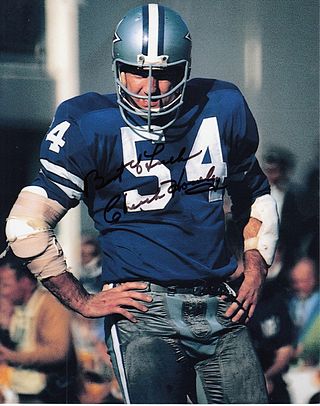
Charles Louis Howley is an American former football player who was a linebacker in the National Football League (NFL) for 15 seasons, primarily with the Dallas Cowboys. He spent his first two seasons with the Chicago Bears, who selected him seventh overall in the 1958 NFL Draft, before playing the remainder of his career for the Cowboys. Recognized as an original member of the Doomsday Defense, Howley received six Pro Bowl and five first-team All-Pro selections, while appearing in two consecutive Super Bowls and winning Super Bowl VI. Howley was also named the MVP of Super Bowl V and is the only player on a losing team to receive the award. He will be inducted in the Pro Football Hall of Fame in 2023.
Larry Craig Morton is a former American football quarterback who played in the National Football League (NFL) for 18 seasons, primarily with the Dallas Cowboys and Denver Broncos. He played college football at California, receiving All-American honors, and was selected by the Cowboys fifth overall in the 1965 NFL Draft. Following nine seasons on the Cowboys, a quarterback controversy with Roger Staubach led to Morton joining the New York Giants for three seasons. He spent his final six seasons as a member of the Broncos, winning NFL Comeback Player of the Year and AFC Offensive Player of the Year in 1977.
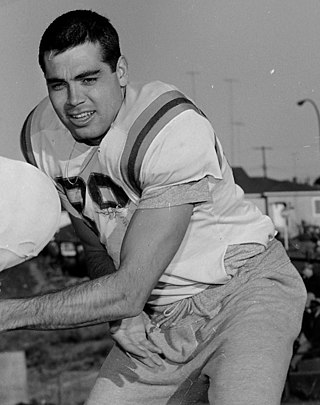
Joseph Robert Kapp is an American former football player, coach, and executive. He played college football as a quarterback at the University of California, Berkeley. Kapp played professionally in the Canadian Football League (CFL) with the Calgary Stampeders and the BC Lions and then in the National Football League (NFL) with the Minnesota Vikings and the Boston Patriots. Kapp returned to his alma mater as head coach of the Golden Bears from 1982 to 1986. He was the general manager and president of the BC Lions in 1990.
Throughout the years, a number of teams in the National Football League (NFL) have either moved or merged.

Duane Julius Thomas is a former American football running back in the National Football League (NFL) for the Dallas Cowboys and the Washington Redskins. He played college football at West Texas State University.
Lee Roy Caffey was an American football outside linebacker in the National Football League (NFL) for the Philadelphia Eagles, Green Bay Packers, Chicago Bears, Dallas Cowboys and San Diego Chargers. Caffey is one of the top 100 Green Bay Packers of All-Time (#57). Caffey and teammates, Ray Nitchke and Dave Robinson, were named one of the top 10 best linebacking trios in the history of the NFL by ESPN. He played college football at Texas A&M University and is one of Texas A&M’s top 10 best players in the NFL.

Benny Jewell Barnes is a former American football cornerback in the National Football League for eleven seasons, all with the Dallas Cowboys. He played college football at Stanford University in the Pacific-8 Conference.
Michael Theodore Gaechter was an American football safety in the National Football League (NFL) for the Dallas Cowboys. He played college football at the University of Oregon.
The 1971 Dallas Cowboys season was the franchise's 12th season in the National Football League (NFL), the first at the new Texas Stadium in suburban Irving, Texas and the 12th season under head coach Tom Landry. The Cowboys led the NFL with 406 points scored. Their defense allowed 222 points.
The 1960 Philadelphia Eagles season was the franchise's 28th season in the National Football League, and finished with the Eagles' win over the Green Bay Packers in the NFL championship game to get their third league title. The victory over the Packers was also the first and only playoff defeat of the Packers' Vince Lombardi's coaching career. The 1960 season was the Eagles' first postseason appearance since their last NFL championship season of 1949. It was their only postseason appearance in the 28 seasons from 1950 to 1977, and their last NFL title until their victory in Super Bowl LII, 57 years later.

The Kansas City Chiefs are a professional American football team based in Kansas City, Missouri. The Chiefs compete in the National Football League (NFL) as a member club of the league's American Football Conference (AFC) West division.
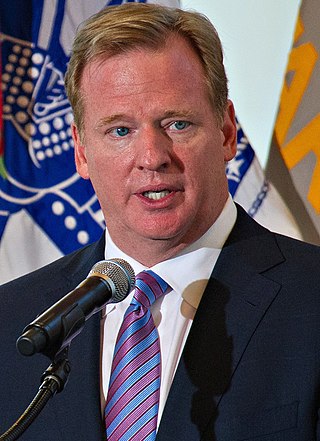
The National Football League Commissioner is the chief executive officer of the National Football League (NFL). The position was created in 1941. The current commissioner is Roger Goodell, who assumed office on September 1, 2006.
Eldridge Small was an American football cornerback who played with the National Football League's (NFL) New York Giants from 1972 to 1974.
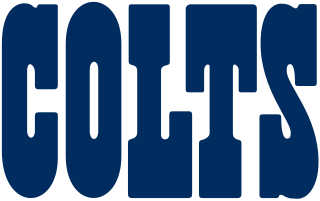
The Baltimore Colts were a professional American football team that played in Baltimore from its founding in 1953 to 1984. The team now plays in Indianapolis, as the Indianapolis Colts. The team was named for Baltimore's history of horse breeding and racing. It was the second incarnation of the Baltimore Colts, the first having played for three years in the All-America Football Conference and one in the National Football League (NFL). This Baltimore Colts team played its home games at Memorial Stadium.
The National Football League television blackout policies are the strictest among the four major professional sports leagues in North America.
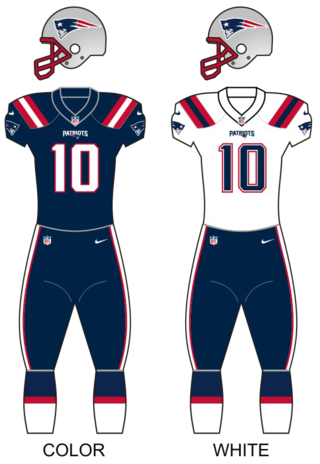
The 2021 season was the New England Patriots' 52nd season in the National Football League, their 62nd overall, their 20th playing home games at Gillette Stadium, and their 22nd under head coach Bill Belichick.










